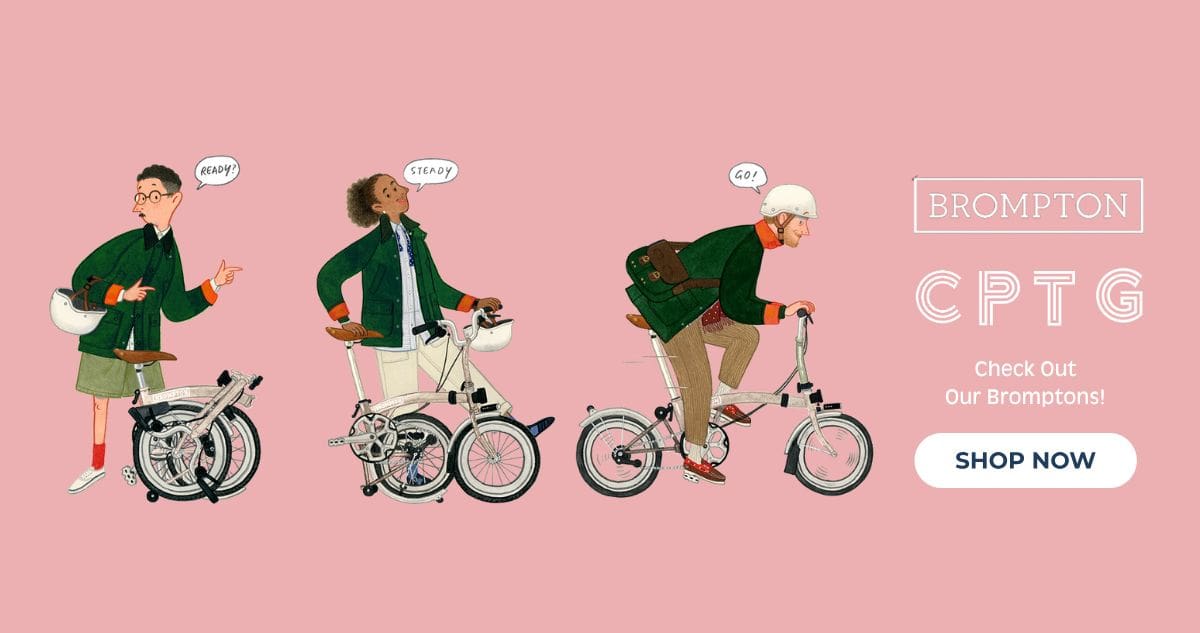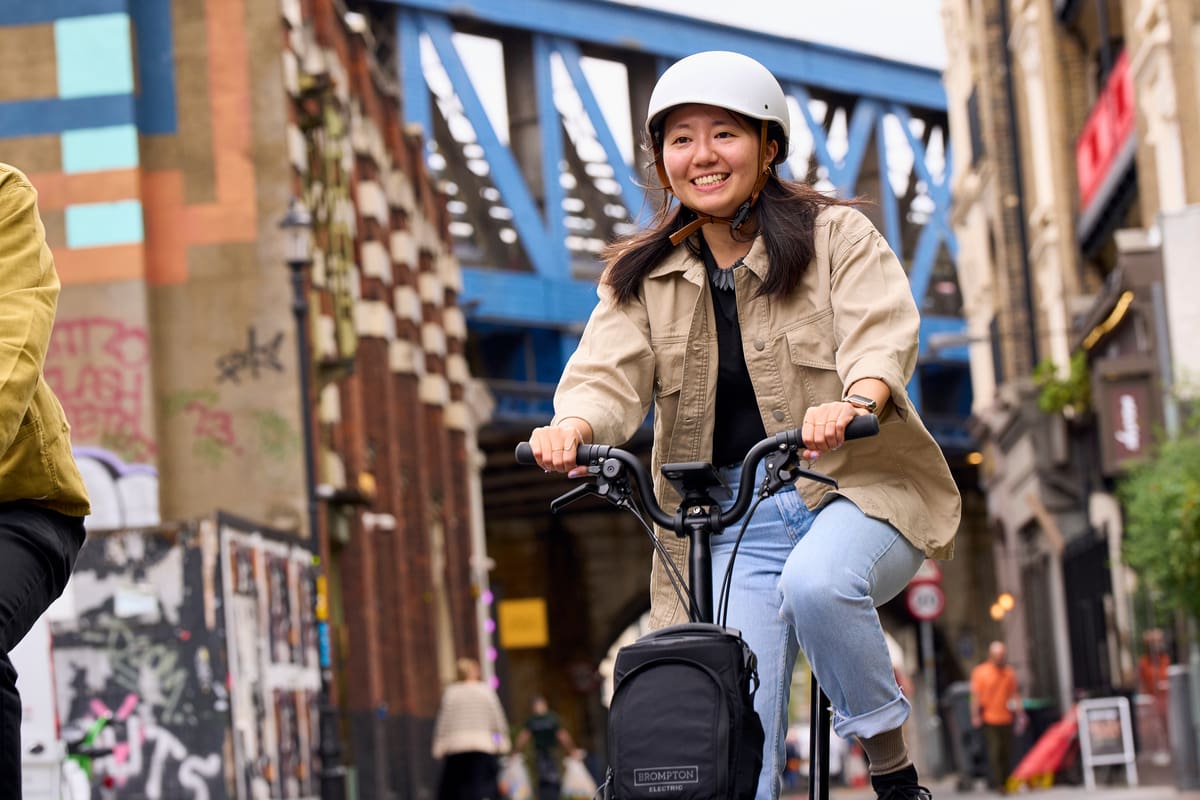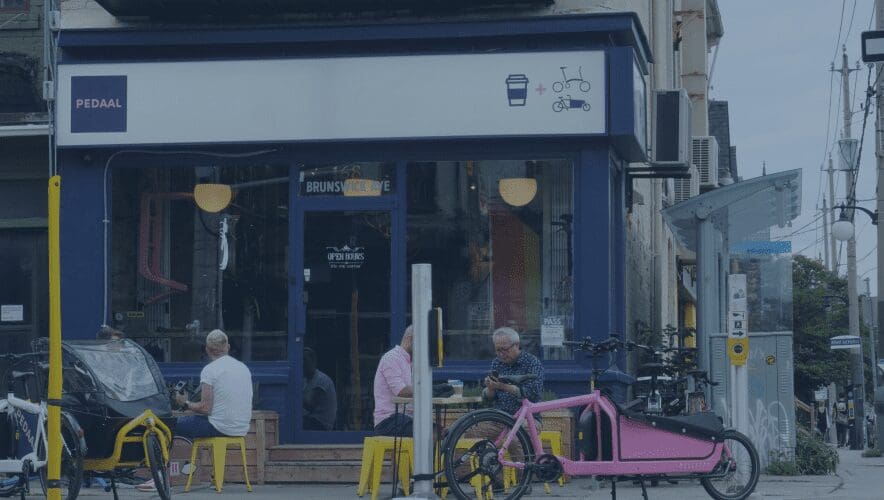If you’ve been hunting online for a Brompton size guide, you’re not alone – we’ve been there too. And there’s a reason one doesn’t really exist. Brompton is a nuanced company, and engineering a bike this refined is never straightforward. The same goes for sizing: it’s not simply “one height, one position.” Height matters, of course, but so does your disposition – the preferred way you like to ride. For instance, some people love an upright, heads-up position; others want a bit of lean, a touch of aggression, or a full-on sprinting stance. Height sets the stage, but your riding style writes the script.
How We Did This
To make sense of it all, we brought in three of our riders: Hannah, our 6’2” barista and Brompton guru; Jacob, 5’9”, our original barista (hi Jacob!); and Ryan, 5’4”, our social media whiz. We put them on each handlebar, took photos, and graphed the results. You’ll see these charts throughout the post, showing how each rider sits on the high, mid, and low bars.
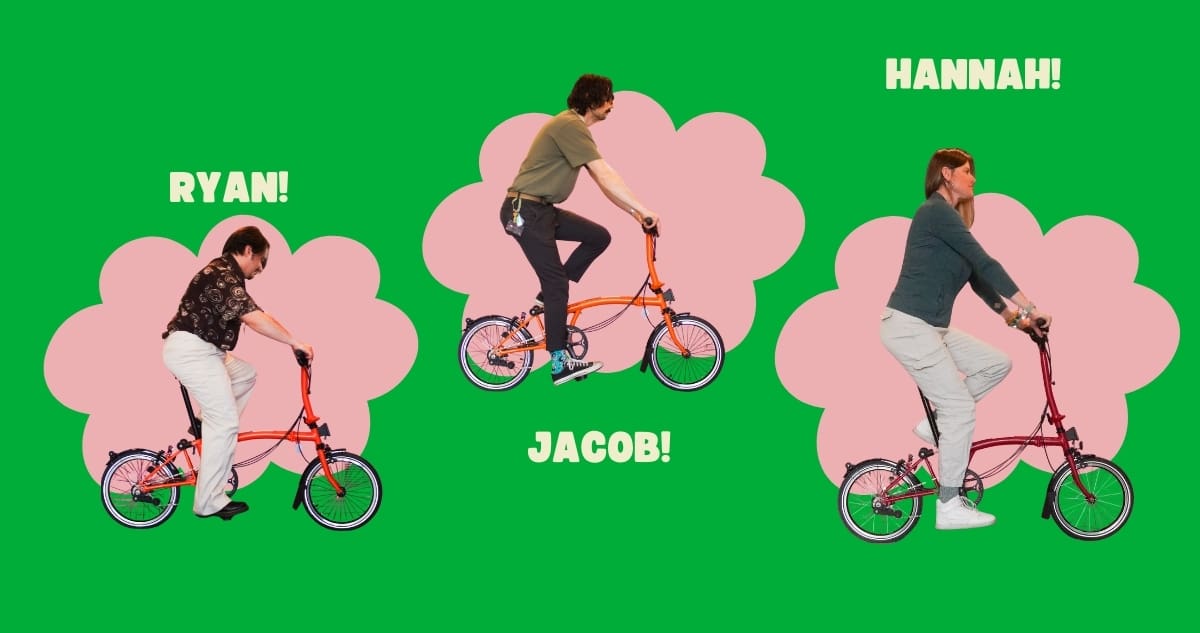
Note, however, that none of this is perfect. Torso length, arm length, leg proportions, and personal comfort all play a role. But what we can show is the way each rider’s body interacts with the bike’s geometry, and how handlebar choice maps to different riding positions.
The Handlebars
Brompton makes three handlebar heights, each roughly two inches apart from the next. While that doesn’t sound like much, it has a huge effect on your posture. High bars tilt your upper body upright, low bars encourage a forward lean. Combine that with your height and your riding disposition, and you can see why there isn’t a one-size-fits-all solution.
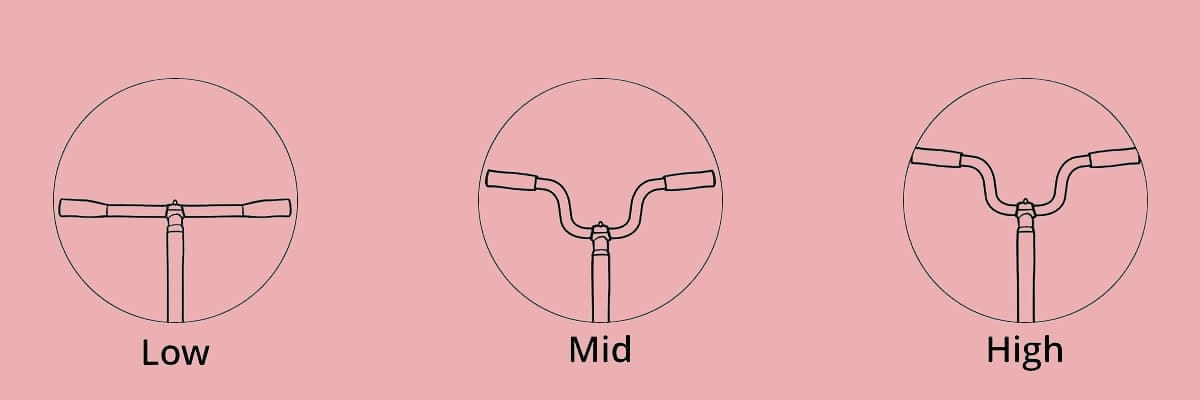
Disposition
To make this more tangible, we think of each position like a type of bike — something that signals the kind of ride you’re getting. From upright to aggressive, the spectrum goes like this:
🚲 Penny Farthing: Think of the cartoonish giant wheel of the 1800s. Sitting over it, you’re perched almost vertically, light on the front wheel. It’s fun for a short, gentle roll, but the steering can feel floaty.
🚲 Dutch Bike / Beach Cruiser: Upright, relaxed, and steady. It doesn’t give you the sharpest acceleration, but there’s decent front-wheel grip, unlike the Penny Farthing position.
🚲 Commuter Bike: The sweet spot for most of our customers. This position balances upright, heads-up comfort with the Brompton’s zippy acceleration and agility.
🚲 Racing Bike: Leaning forward, this rider unlocks the Brompton’s acceleration and sharper handling. Upright comfort is sacrificed for speed, sharp cornering, and rocket-ship acceleration.
🚲 Time Trial Bike: The most aggressive stance. Low, aerodynamic, and performance-focused. Fun in short bursts for those who are committed, but demanding on the body and not recommended for everyday riding.
You’ll see in the charts how our three riders map into these positions depending on the handlebar.
The High Handlebar
Looking at the high bar, Ryan at 5’4” ends up in Penny Farthing territory. He’s perched upright, steering a little light, which can feel unstable for corners. That said, it could be perfect for someone with back concerns or new to cycling who wants a slow, safe roll.
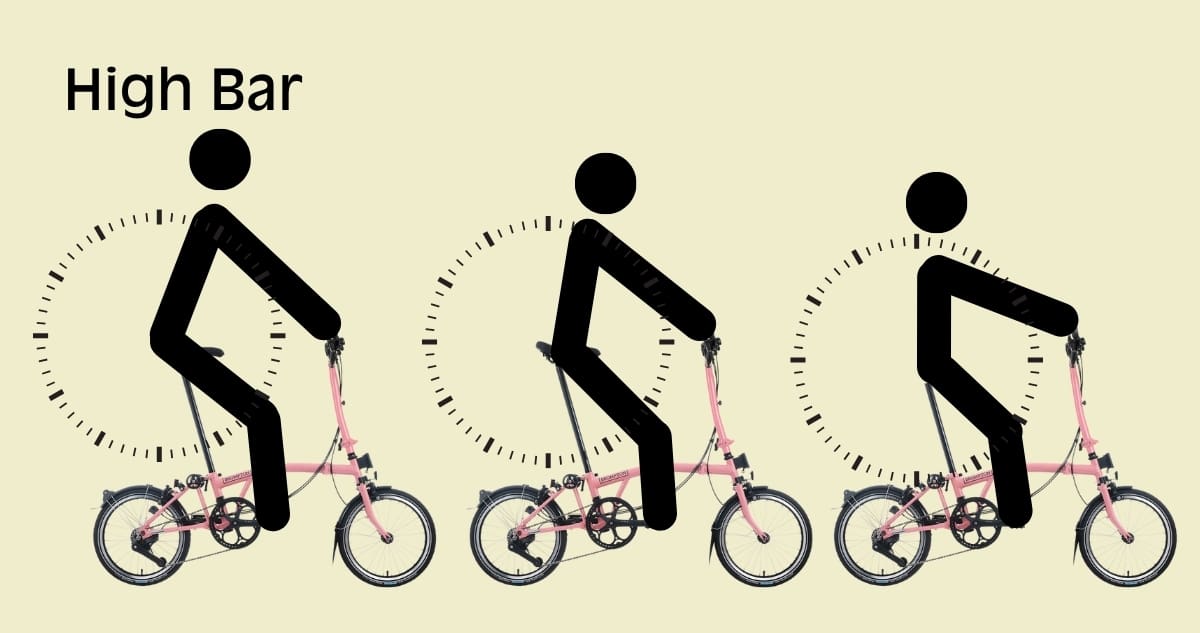
Jacob, at 5’9”, lands in the Dutch Bike / Beach Cruiser zone. Upright, relaxed, and steady — the classic pleasure-cruise position. He gets enough front-wheel grip for confidence but doesn’t lean forward, keeping it easy and comfortable. Hannah, at 6’2”, with her longer frame, naturally leans more over the handlebars, putting her in the Commuter Bike stance. She enjoys some acceleration and agility while keeping an upright feel, showing how height shifts the same handlebar into different positions.
The Mid Handlebar
Switching to the mid bar, Ryan now sits in the Dutch Bike / Beach Cruiser zone. Comfortable, stable, and more connected to the front wheel — a great heads-up city ride.
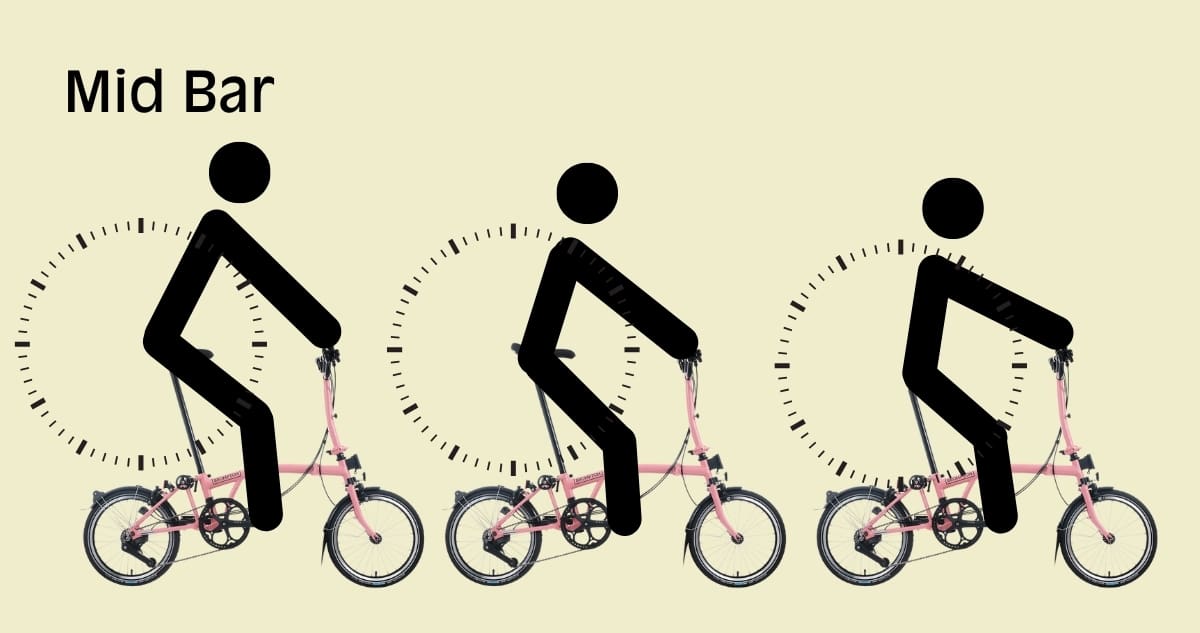
Jacob hits the Commuter Bike sweet spot. Balanced, responsive, and versatile — the posture that most city riders want for daily commuting. Hannah moves into Racing Bike territory. Leaning forward more, she gets sharper handling and better pedal power. It’s still manageable, but this is where the Brompton starts feeling lively and sporty rather than purely upright.
The Low Handlebar
The low bar gives Ryan a Commuter Bike posture. He’s balanced, agile, and connected to the front wheel. But shorter riders often skip the low bar to maintain a more heads-up feel in traffic. Jacob gets a Racing Bike stance. Punchy, responsive, and fun for corners — this is where the Brompton really shows off its acceleration and agility. Hannah, on the low bar, ends up in Time Trial Bike posture. Extremely low, leaned forward, and demanding on her body. It’s thrilling if you’re experienced and fit, but most riders find it too aggressive for everyday use.

Let’s Sum This Up:
Looking across all three bars, patterns emerge. Ryan rarely reaches Racing or Time Trial positions, but finds comfort in Dutch Bike and Commuter postures. Jacob has access to all three main positions, which explains why average-height riders often have the most flexibility. Hannah rarely sits upright enough for Penny Farthing or Dutch Bike positions but shines in Commuter, Tour, and occasionally Time Trial postures if she’s feeling aggressive.
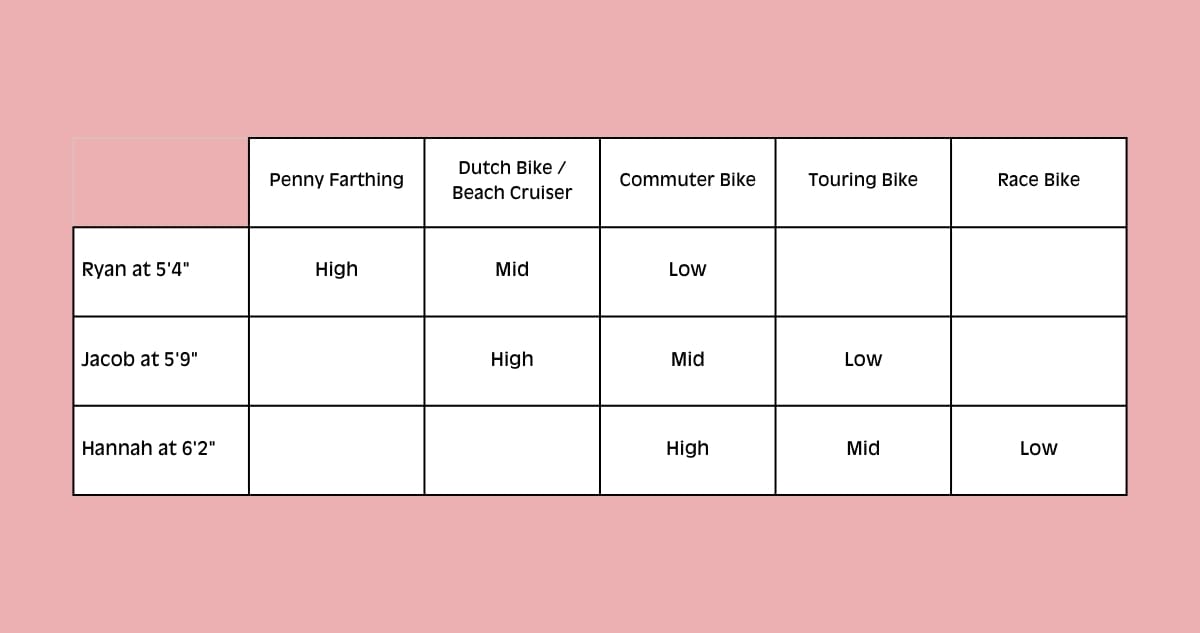
The takeaway is clear: most people are happiest in that middle range — Commuter Bike or Racing Bike — while the extremes serve very particular needs. Your height, back, and riding style will determine which handlebar fits best, but thinking in terms of these archetypes makes it easier to picture what riding your Brompton will actually feel like.
In Conclusion
Of course, a guide can’t account for every torso, arm, or leg length, but with these charts and archetypes, you can see the broad patterns. And if you’re still unsure? Come ride the bars in person, or reach out — we’ll help you find the posture that works best for your city adventures.
Of course, if you have any questions about sizing, we have bikes to try out or, if you’re from outside of town, contact us and we can dig in a little deeper!


